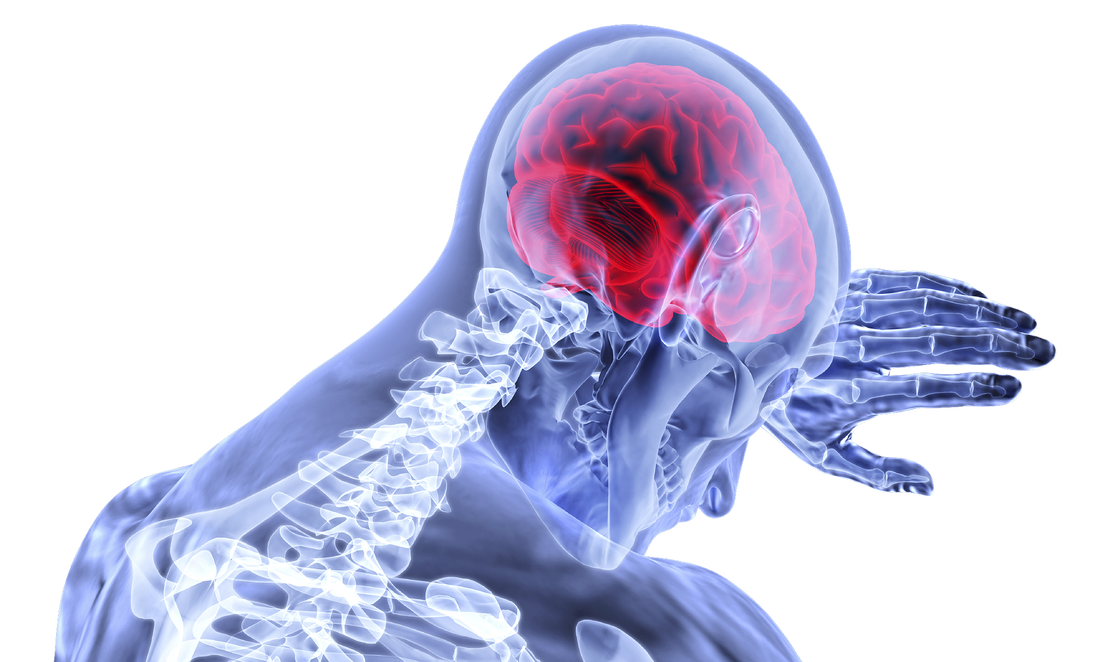|
Everyone has experienced pain at one time or another. But pain is personal – each of us experiences pain differently. Some of us feel it very intensely, and others not so much. This is because pain depends not only on what happens to your body, but also how your brain responds to it. This is what is known as the Pain Matrix. What is the Pain Matrix?
This matrix processes information from the nerves that tell us when we’re in danger or injured. It responds by increasing or decreasing our sensitivity to these messages. These changes – known as top-down regulation – control how intensely we feel pain. The Pain Matrix involves different areas of the brain that control emotions, behaviour, movement, perception and thoughts. So it’s no surprise that when you’re in pain, all of these different factors can change. How does the Pain Matrix work? There are two main changes that the Pain Matrix can induce. Anti-nociception is a reduction in sensitivity to pain, whereas pro-nociception is an increase. Anti-nociception uses the body’s natural painkillers – endorphins – to block the danger signal and decrease the pain response. Ever seen someone injure themselves in a dangerous situation, like in a car accident, but they can still move to safety without feeling pain? This is because a rush of endorphins temporarily blocks out the message of danger so they can get to safety. On the other hand, pro-nociception is usually due to swelling and chemical changes in the nerve endings around an injury. Have you ever had a bad paper-cut? Your sensitivity is much higher around the cut, even if you’re not touching the injured part. Sometimes, even moving the other fingers can hurt. Changes in the brain = changes in the pain Despite what we used to believe, the brain can continually change its form and function as a form of adaptation. These changes are known as Neuroplasticity. Nerve pathways can physical alter by increasing or reducing the number of connections. Or they can alter the release of neurotransmitters – more stimulating neurotransmitters means more nerve activity, which can increase the sensitivity of the system. When it comes to chronic pain conditions, the central nervous system is reorganised. This can include damage to nerves, leading to abnormal connections between them. Pain is more likely to occur than not, as pro-nociception increases and anti-nociception is impaired. This can lead to exaggerated responses to pain including pain caused by non-painful experiences - this is known as allodynia, and can be a common symptom in conditions like Fibromyalgia. Long term inflammation can lead to a heightened sensitivity of the nervous system. In the presence of inflammation the amount of nerve stimulation needed to send the signal decreases and the nerve firing rate increases. With so many danger messages coming in when there is inflammation present, the nervous system starts to respond on high alert by using its protective mechanism - pain! Controlling the pain There is no one size fits all approach to controlling pain, but theres increasing evidence that changes to pain intensity can be influenced by more than just the incoming messages from our tissue - it can also be influenced by our perceptions of danger and safety. This is likely due to the pain matrixes involvement in areas of the brain that deal with emotions, behaviours and thoughts. Pain experts Dr Lorimer Moseley and Dr David Butler of the NOI Group have published a fantastic book called Explain Pain that describes DIMs and SIMs - that is, Danger In Me (DIMs) and Safety In Me (SIMs). They say that any credible indication of danger can increase your perception of pain, and likewise a credible indication of safety can decrease the pain. We'll dive deeper into this research in future blogs. The Gate Control Theory involves a more physical approach to pain control. Have you ever bumped into something, then rubbed the area to make it hurt less? The Gate Control Theory is that non-painful sensations such as pressure can block or override the danger messages and reduce pain. The nerves that tell us about pressure are faster and more effective than those that tell us about danger. This might be part of why something like a good massage session helps with pain. Massage is also a great way to stimulate some feel-good endorphins, which promotes anti-nociception to reduce painful sensations! If you’re looking to minimise your pain, a combination of massage, exercise therapy and other myotherapy treatments can help. Have a look at my online booking calendar to book in for an appointment. Headaches can vary from mildly dull and annoying to intensely sharp or throbbing. They can creep in slowly, or seem to appear out of nowhere. For some people they can last for a very short time, and others get headaches that just don't seem to quit. No matter what the cause of your headache, these simple tips are a great first step to help you to feel a little bit better. Suss out the origin
First up, you want to figure out why you have a headache. Have you spent too long at the computer without moving over the last few days? Have you been under a lot of stress? Have you lifted or carried something heavier than you're used to? Are you dehydrated? Or could it be hormone related? Having an idea of why you have a headache can help you figure out if you need help from your Myotherapist for muscle related pains, or if you need to make some changes to your routine like drinking more water or finding ways to reduce stress. Check in with your muscles Most headaches have some kind of muscular involvement, whether it’s directly causing the headache or is a side effect of the pain. The good news is that you can figure out if your muscles are involved. Have a feel along your neck and shoulders for any trigger points – spots that are tender and a bit painful to touch. Strong trigger points can send referred pain to other muscles, too. These are signs that your muscles are feeling tense, maybe from more physical activity than you're used to, or from staying in one position for a long time. Sometimes even your arms can have trigger points, so have a feel around your upper arm, particularly along the tricep area on the back of your arm. Have you been clenching your teeth? Feel around your face and jaw to check if there are any super-tender areas. You might also find a tight band around your temples. Headaches can be an early sign of TMJ dysfunction, so make sure you see your friendly myotherapist quick-smart if you are getting headaches caused by clenching or grinding. Are you getting sick? Another common cause of headache is sinus pain. Try gently pressing between your eyebrows and on either side of your nose, right below the eyes. If this area is tender, you might have a case of sinusitis coming on, and you'll probably have other symptoms like a runny or blocked nose and a fever. If you have a cold or infection, its always best for both of us if you wait til you've recovered from the contagious phase of the infection before you come in to see me. Check in with your pharmacist for a recommendation for something that can help with your cold/flu or infection symptoms - clearing the infection can often clear the headache! Something I can vouch for personally is Salt Therapy to speed up the time it takes for a sinus infection to clear. The salt helps with inflammation in the nose and lungs, as well as breaking up the congestion and making it easier to clear the sinuses which hugely relieves the pressure. Natalie at Salts of the Earth in Boronia takes care of me when I feel a sinus infection or cold coming on. Have a good stretch Remember those muscles from the last tip? They are the ones we want to stretch out gently. Roll your neck up and down, then side to side, breathing into any tight or sore spots. My little bonus tip here is to sit on your hand or hold the base of your chair so that you can really isolate the stretch into your neck and shoulders - when you're super tight, sometimes what should be a neck stretch becomes the whole upper body moving at once! Locking down your shoulder by sitting on your hand will help you feel a much more satisfying stretch into your neck! Open and close your jaw slowly, stretching out the muscles and releasing tension. Using your fingertips to massage over your jaw while you open and close can also feel really relieving! Reach your arms back behind your body for a stretch that targets the front of your shoulders, then roll down slowly as if you were trying to touch your toes for a nice back stretch - it doesn't really matter if you can or can't actually get to your toes, its more the stretching action here that counts. You can even bend at the knees if you feel too much strain in your hamstrings and the back of your legs. Drink some water! Most of us don’t drink enough water – myself included. But dehydration can cause headaches, and make them worse even when it’s not a direct cause. If you feel a headache rolling in, drink 1-2 cups of water. It can’t hurt, so why not give it a try? Is stress playing into your headaches? What does your down time routine look like? If its a bit neglected, try to find some time for things that you enjoy that can help reduce stress. For some people, that could be exercise or meditation - which are both fantastic for getting your brain to release some lovely happy hormones and neurotransmitters! But it might also be reading, gardening, seeing a friend, going out for a meal, playing a game. Remember – headaches and migraines are two different things! A super-bad headache does suck, but it feels different to a migraine. I’ll be sharing more on migraines in the future, but there are a few telltale signs. It’s probably not a migraine unless you experience at least a few of these:
If you have a headache that is being caused or worsened by tight muscles, I’m here to help. A Myotherapy treatment for headaches will look at your head, jaw, neck and shoulders, and could include some feel-good remedial massage to release tight muscles, as well as other approaches like cupping, needling or mobilisations to reduce pain and improve your movement. Book in a short session today, and we’ll have you feeling better shortly. |
Meet Our Team
We have a team of great practitioners available 7 days a week at our Rowville clinic. Archives
July 2024
Categories
All
|
Got a question about Myotherapy?
Contact Mel by phone, email or Facebook
|
Simple Wellness Myotherapy & Remedial Massage Clinic
Shop 12B 150 Kelletts Rd Rowville VIC 3178 |
Phone us on
03 8204 0970 |



 RSS Feed
RSS Feed